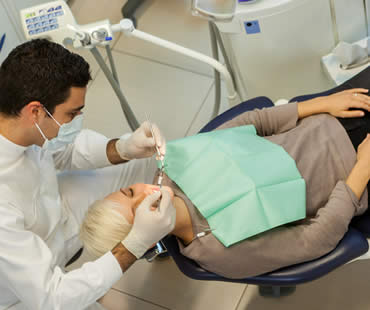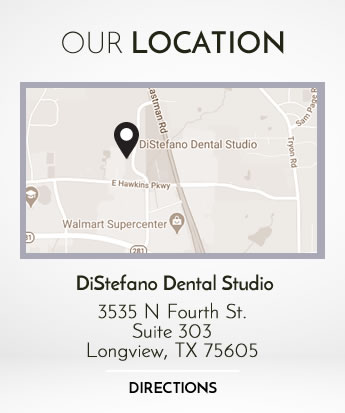
Sedation dentistry is rapidly becoming an extremely popular choice for patients, offering them the best oral care available while providing them with a comfortable, stress-free experience. Benefits exist for both the patient and the dentist, especially for certain patient groups, who may only be able to obtain dental care they need while under some kind of sedation.
Sedation dentistry uses various medications to help the patient relax while undergoing a dental procedure. The sedation allows the patient to be free of fear, anxiety and stress, and in some cases, to have a reduced memory of the treatment itself. This allows for a much more favorable experience, especially when undergoing invasive, extensive or multiple-visit treatments such as extractions, gum surgery, root canals, or some cosmetic dentistry procedures.
Because sedation dentistry is specifically designed to reduce or to alleviate fear and anxiety, the patient is more relaxed during the dental visit. Dentists working on tense or anxious patients are often aware of the problem and have to work with greater care. The removal of this patient tension allows the dentist to work more quickly and surely, leading to a shorter appointment and a more positive experience for both doctor and patient.
Dentists require cooperation from the patient in order to proceed with any dental procedure. Patients who are very young, have special needs, an acute gag reflex, or movement control issues can be extremely challenging for dentists to administer the necessary care. Sedation dentistry can solve this problem, allowing for patients to be cooperative and still, providing the safest, best experience for patient and doctor alike.
Patients who have positive experiences at the dentist are more likely to return for regular dental check-ups. These patients have overall better dental hygiene and tend to have fewer serious dental issues over time. Patients who have good oral care will feel better about their smiles and will be more confident and comfortable throughout the day.
We treat patients from Longview and the surrounding area

Fear and anxiety make dental treatment a challenge for many people. Sedation dentistry offers many options to help patients overcome their fears and experience a more comfortable, relaxing treatment. One of the most common options in sedation dentistry is oral conscious sedation. Here are some common questions about oral conscious sedation and answers about how it can help alleviate your stress about undergoing dental procedures:
- What is oral conscious sedation? This type of sedation utilizes a combination of pain relievers and sedatives to induce an altered state of consciousness that allows you to undergo all kinds of dental treatment in a totally relaxed and comfortable state.
- Am I asleep during the procedure? Patients who receive oral conscious sedation are drowsy but awake and able to communicate with their dental professional. This type of dental sedation allows you to be relaxed but aware.
- Will I feel pain during the dental treatment? With oral conscious sedation, you will most likely not feel any discomfort or pain.
- Is oral conscious sedation safe? While it is considered safe for most patients, your dentist will evaluate your medical and dental health to determine if you are a good candidate for oral sedation.
- Can I resume normal activity immediately after receiving oral sedation? Because you may still be slightly drowsy and under the effects of the medication, it is advised that you arrange to have a friend or family member drive you home after treatment.
- Will I have bad memories of my dental treatment? With oral conscious sedation, you will feel completely relaxed and have little to no memory of your dental procedures.
Thanks to sedation dentistry options like oral conscious sedation, you no longer have to dread or postpone necessary dental treatment due to fear and anxiety. Contact your dentist to find out how they can help you conquer your fears and restore your oral health with this gentle approach to dentistry.
We treat patients from Longview and the surrounding area

Do you have apprehensions regarding dental exams or therapies? Do you find yourself worrying about your teeth and concerned about exams? You are not alone. Many people experience anxiety or fear regarding the dentist’s office. You might want to consider sedation dentistry.
Qualified sedation dentists are able to work with you to get the dental care you require without the burden of fear or nervousness that might lead you to postpone work.
Sedation dentistry therapies are overseen and administered by specially trained dentists and dental technicians. These dental professionals have undergone hours and hours of special education in sedation equipment, techniques and medications. These trained individuals are aware of the best sedation options for each patient type, and they can administer them safely and reliably.
If you are thinking about sedation dentistry for your next dental treatment, consider the following:
- How much education does the dentist have related to sedation dentistry? What continuing education programs have been completed that specialize in anesthesia and conscious sedation?
- What organizations does the dentist belong to that provide ongoing education to keep the dentist and staff apprized as to the latest techniques and research? A good sedation dentist is always looking to learn new procedures that can benefit his or her patients, and can do so through professional organizations such as the American Dental Society of Anesthesiology.
- What equipment is in place to monitor a patient’s level of sedation? Sedation dentistry cannot be safely practiced without a pulse oximeter and oxygen equipment. Medications should be on-hand to reverse any rare reactions to the sedation.
It’s your right as a patient to have answers to these and all of your questions before you undergo any dental therapy. Your dentist should be very forthcoming. Having the right information allows you to make the right decisions for you and your dental care. Talk to your dentist today regarding these and any questions you have about sedation dentistry or his or her qualifications. Get the best care you need, and skip the worry!
Schedule your appointment at our Longview dental office

One extremely common fear shared by many people is a fear of the dentist. Patients who possess this fear are often anxious and nervous about the sights, sounds and smells of a dentist’s office. Just imagining a routine visit can leave someone shaken and fearful, unable to sleep the nights prior to treatment.
Patients who share this common fear can put off necessary dental work. A fear of pain or needles can lead a patient to tolerate tooth pain or signs of infection in the mouth. If this sounds like you, talk to your dentist about sedation dentistry options.
Many people assume you must be fearful at a phobic level to benefit from sedation dentistry. This isn’t true! Sleeplessness, anxiety and low-level fear can all be helped with some form of sedation dentistry. Oral sedatives can be prescribed to be taken the night prior to a dentist visit, as well as the day of, to ensure a restful night’s sleep and an easy day before treatment.
Sedation dentistry during procedures is very safe, as you are monitored at all times by the dentist. Because of the deep level of relaxation possible utilizing sedation dentistry, more work can be done in a single visit, cutting down on trips to the dental office.
General dentistry procedures such as checkups, regular cleanings and cosmetic treatments can all be performed on a patient being treated with sedation dentistry. For a patient with fear and anxiety, each therapy can be made better with the addition of sedation dentistry.
Over time, with the use of sedation dentistry, some of your fears and anxieties can begin to lessen. Positive experiences can build up mental and emotional trust in the dentist, and patients can find that they need less and less of the sedation to feel comfortable.
If you need a dentist in Longview contact us today

If you have chosen to utilize sedation dentistry to address your anxiety or discomfort during dental treatment, you need to make preparations beforehand to be certain you are safe following your dental visit. Some sedation options leave you unable to drive or make decisions clearly, and you should be prepared to face whatever lingering effects come your way.
Conscious oral sedation is prescribed in the form of a pill that is taken orally. Typically, this pill is taken about an hour prior to the procedure in order to ensure relaxation and ease. Often a dentist will recommend that the patient take a dose the night prior to the treatment, making sure that the patient rests well and is in the best mental and physical condition for recovery. Laughing gas, or nitrous oxide, is another form of conscious sedation. Both the pills and the gas leave patients comfortable and at ease, but still responsive to commands by the dentist or staff.
The next level of sedation is intravenous sedation, also called IV sedation. This sedation is the fastest acting of all the sedation dentistry treatments. A known side-effect of IV sedation is memory loss, so most patients won’t remember what happened while they were “under.” Many patients believe erroneously that they were completely “out” or unconscious during treatment, but this isn’t true. You are still able to respond to commands, but the memory loss makes you feel as though you are asleep.
You will not be allowed to drive yourself following IV or conscious oral sedation. Even though you are up and walking and talking, it may take hours before the effects of the sedation wear off enough to make it safe for you to drive. Do not even consider trying to trick the dentist into thinking someone else is driving you home. You could cause a serious accident and harm yourself or others.
Talk to your dentist to determine what is recommended as far as recovery time goes for your specific sedation dentistry treatment choices.
Our dental office is located in Longview

What defines sedation dentistry?
Sedation dentistry is any type of dentistry treatment performed in conjunction with the patient being given some kind of anesthetic. Sedation dentistry can give the dental professional the freedom to perform all types of therapies while the patient is completely comfortable and pain-free.
Is sedation dentistry safe?
While utilizing sedation dentistry, you will be monitored by your dentist at all times. Age, medical conditions and existing medications can all be factors to consider when choosing a type of sedation.
Is conscious sedation the same thing as sedation dentistry?
Conscious sedation is the term for a type of treatment a patient receives that allows the patient freedom from fear, anxiety and pain while still remaining aware enough to follow simple instructions given by the dentist’s team. Conscious sedation can be administered on several levels, customized to each particular patient’s anxiety level.
How is conscious sedation administered?
Conscious sedation can be administered orally, inhaled or by IV. Oral sedation is delivered via a pill. Most patients take the pill one hour prior to the treatment. Some choose to take a pill the night before to be certain to get a good night’s sleep. Inhaled sedation is commonly known as laughing gas, and can allow you to feel as though you are drifting away during a treatment. Deeper, faster-acting sedation can be achieved through intravenous sedation.
Should I choose sedation dentistry?
Sedation dentistry is a choice open to anyone who is in good physical shape who has fear, anxiety or stress about an upcoming dental treatment. If you find yourself dreading a visit to the dentist to get necessary work completed, be honest with your dentist about your fears and ask about all of the ways sedation dentistry can help you get the work you need, in comfort and ease.
If you live in the Longview area contact us today









